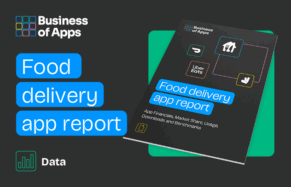
From May 20th to 22nd, over 2,000 mobile marketers, founders, product leaders, and growth practitioners descended on the MGM Grand for the latest edition of MAU Vegas. Attendance was up 27% from last year, and the energy matched the numbers: lively sessions, energetic discussions, and active networking from poolside to pitch deck.
Across dozens of talks and strategy deep dives, one thing became clear: there’s no single playbook for growth in 2025. But there are powerful patterns emerging.
Here’s a look at the key trends keeping app marketers buzzing right now:
Where growth, product, and AI collide
Today’s mobile marketers aren’t confined to just one role. They’re bridging product, brand, growth, and AI. Strategy today is interconnected, with teams expected to align creative testing with product development and lifecycle messaging.
The best-performing teams are blending roles and breaking silos. Growth is no longer a channel game, it’s an ecosystem play.
Creative is the new strategy layer
Creative was a dominant theme throughout the event, not as a final asset but as a discovery tool. The smartest teams are aligning ad creative with in-app experience, down to the exact onboarding screen with the highest LTV.
It’s no longer about matching assets to channels. Instead, teams are aligning creative with the user lifecycle and using it to surface what actually resonates. That alignment is only possible because more teams are breaking down silos, with UA, product, CRM, and brand now sitting at the same table, optimizing together. Creative has become the connective tissue.
Creative ≈ product ≈ performance. It’s one system now.
Tips and tricks from the experts
- Identify the single onboarding path that leads to the highest lifetime value, and then reverse-engineer your store presence to reflect it. Every creative — ads, screenshots, previews, etc. — should communicate that one value proposition clearly and consistently. When the promise a user taps on is exactly what they experience first in the app, conversions compound.
- Before scaling big, some teams are testing hooks using small-budget static image campaigns to validate messaging. Only the most resonant copy makes it into video or UGC formats, saving time and spend.
Attribution alone won’t get you there
Post-IDFA, attribution is no longer the full picture, rather it’s only one piece of the puzzle. Attendees stressed the shift toward incrementality testing, media mix modeling, and qualitative signals. The point isn’t to abandon attribution, but rather to combine it with context.
At the foundation of this shift is a reliable mobile measurement partner (MMP). Before scaling across channels — whether it’s Meta, TikTok, Reddit, or email — teams are doubling down on attribution infrastructure that filters fraud, ensures consistency, and builds confidence in decision-making. Without that base layer, optimization becomes guesswork.
Attribution is still essential, but only when it’s combined with context, quality, and control.
Community is now a growth engine
The strongest growth loops aren’t always built with paid media — they’re built with, by, and for people. From massive in-app communities to influencer-driven storytelling, more brands are leaning into identity and shared experience over raw impressions.
Whether it’s a 9-million-strong Facebook group or organic virality on TikTok, community is becoming a channel in its own right, one that builds momentum and trust that ads alone can’t replicate.
Underserved markets are high-intent opportunities
Tier-2 regions like Ukraine and Brazil remain fertile ground for verticals like fintech, VPNs, and utilities, especially as competition intensifies in core markets.
The formula isn’t complicated: translate your store assets, localize pricing, and surface region-specific pain points. Marketers leaning into these markets are unlocking a path to margin-rich, long-tail growth where bids are lower and demand is real.
Lifecycle is the new personalization
AI is expanding what’s possible with personalization, but the most effective teams are moving beyond surface-level segmentation.
They’re designing experiences around lifecycle moments, building for behavior, timing, and intent.
Users aren’t static personas; they’re constantly evolving, and the strategy needs to evolve with them.
Distribution is diversifying
Large platforms still play a central role in user acquisition, but they’re no longer the whole playbook. Growth teams are expanding beyond the usual suspects, finding performance gains in high-intent, community-driven apps and niche placements.
It’s less about spending more and more about showing up where relevance is highest.
MAU Vegas returns next year from May 19th to 21st. Between now and then, the ideas shared this year — cross-functional collaboration, creative-led product testing, and community-powered growth — are likely to keep defining the space. The old growth levers aren’t gone, they’ve just evolved.
For more strategies and learnings from MAU, check out VP of Strategy & Growth at MAU Vegas Angela Harar’s recap or watch Steve Young’s video debrief. Both sources and the many LinkedIn wrap-up posts I found were invaluable in putting this post together.















